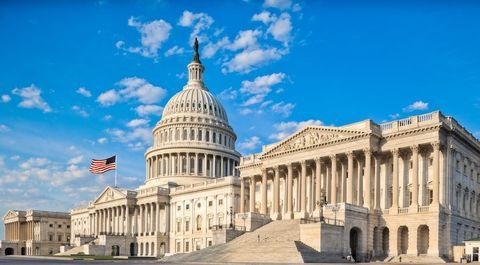New IRS Safe Harbor for Contributions by Generators and Storage Facilities to Regulated Utilities
Client Alert | 4 min read | 06.14.16
On June 10, 2016, the IRS released Notice 2016-36, modifying the safe harbor rules for the tax treatment of contributions of property (including payments made) by an electric generation or storage facility to a regulated public utility in connection with the construction of new or upgraded transmission facilities. A contribution meeting the requirements of the safe harbor will not result in taxable income to the utility. Thus, the safe harbor reduces the amount that a generator or storage facility must pay when the utility constructs or upgrades transmission facilities (or accepts contributions of property for such purpose) to benefit the generator or storage facility. Absent the safe harbor, the generator or storage facility would also have had to reimburse the utility for any taxes it would have had to pay for the contributed property.
A similar safe harbor has been in place since 1988, but the 2016 Notice includes important updates that reflect changes in the electricity and storage industries. In particular, for the first time, the 2016 Notice explicitly applies to contributions made by an energy storage facility. It also modifies the “five percent test” (a limit on the amount of energy which may flow from the utility to the generator) in such a way that deliveries of charging energy to a storage facility can be excluded in applying this test if the energy is not purchased from the same utility that received the contribution, for example if the energy were purchased from a regional energy market.
The safe harbor applies to qualifying transfers of interties made on or after June 20, 2016, but taxpayers may also rely on the safe harbor for qualifying transfers occurring before June 20, 2016.
Background
When an electric generation facility makes arrangements to interconnect its facility to a utility’s transmission facilities, the utility often requires the generation facility to pay the cost of constructing new transmission facilities or upgrading existing transmission facilities. Generally, unless an exception applies, such payments would be taxable income to that utility. And, in determining the amount that the generator would pay for new or upgraded transmission facilities, the utility would include an amount to reimburse it for any tax consequences – typically called a tax gross up.
A potential exception applies if the property transfer qualifies as a “contribution to the capital of a corporation” under section 118(a) of the tax Code. The section 118(a) exclusion does not apply, however, if the contribution is considered to be a “contribution in aid of construction” (CIAC). A taxable CIAC is generally a payment or contribution made by a customer to a utility to enable the provision of services by the utility to the customer.
Between 1988 and 2001, the IRS issued a series of notices - referred to as safe harbors – that established criteria under which contributions associated with the construction of interties between the generator and the utility would be treated as nontaxable events. The initial notice, Notice 88-129, provided a safe harbor for CIAC payments made by entities operating as qualifying facilities (QFs) under the Public Utilities Regulatory Policies Act (PURPA). The 1988 safe harbor was limited to QFs meeting the following criteria: (1) the QF must have entered into (and remained in) a long-term power purchase agreement to sell electricity to the utility, and (2) during the first ten taxable years of the utility beginning with the year the new facilities were placed in service, no more than five percent of projected total power flows over the intertie would flow to the QF (the “five percent test”). When last revised in Notice 2001-82, the safe harbor was expanded, in response to changes in the electric industry, to cover contributions of interties from non-QF generators and to eliminate the requirement for a power purchase agreement with the utility if the generator had entered into a long-term interconnection agreement with the utility used exclusively to transmit power across the utility’s transmission grid for sale to consumers or intermediaries. Ownership of the wheeled electricity was required to pass to the purchaser before the electricity entered the utility’s transmission grid.
Notice 2016-36
Notice 2016-36 again modifies the safe harbor to reflect changes in the electricity industry.
- The safe harbor now expressly applies to storage facilities. The previous safe harbors did not explicitly refer to storage, and the five percent rule may have made it difficult for transfers from such facilities to qualify in any event.
- The five percent test continues to apply but only if the energy flowing to the generator/storage facility is purchased from the utility. Specifically, it must be reasonably projected at the time of contribution that, during the 10 taxable years of the utility beginning with the year in which the intertie is placed in service, no more than five percent of the projected total power flows over the intertie will flow to the generator.
- Power flows reflecting purchases from sellers other than the utility are not considered in applying the five percent test. This provides the framework for storage facilities to avoid the five percent test, for example, by purchasing charging energy from the regional energy markets.
- There is no longer a requirement that the utility receiving the contribution and the generator/storage facility have entered into a power purchase agreement or interconnection agreement. This change reflects the fact that a utility other than the interconnection utility may receive a contribution from a generator in return for upgrading its transmission facilities.
- The safe harbor applies to interties to distribution facilities as well as transmission facilities.
- As before:
- Ownership of electricity sold by the generator/storage facility must pass to the purchaser at the busbar on the generator’s end of the intertie.
- The cost of the intertie must not be included in the utility’s rate base.
- The cost of the intertie must be capitalized by the generator as an intangible asset and recovered using the straight-line method over a useful life of 20 years.
- Certain events will terminate the safe harbor and require the utility to recognize income as a consequence of the contribution.
Contacts
Insights
Client Alert | 2 min read | 12.29.25
FYI – GAO Finds Key Person “Available” Despite Accepting Employment with a Different Company
GAO’s key personnel rule is well-known—and often a source of frustration— amongst government contractors. Proposed key personnel who become “unavailable” prior to contract award—especially where they have accepted employment with a different company—may doom an offeror’s proposal by rendering it noncompliant with solicitation requirements. But GAO’s recent decision in FYI – For Your Information, Inc., B-423774, B-423774.2 (Dec. 19, 2025) provides some potential relief from that rule.
Client Alert | 4 min read | 12.29.25
More Than Math: How Desjardins Recognizes AI Innovations as Patent-Eligible Technology
Client Alert | 10 min read | 12.24.25
Client Alert | 3 min read | 12.24.25
Keeping it Real: FTC Targets Fake Reviews in First Consumer Review Rule



